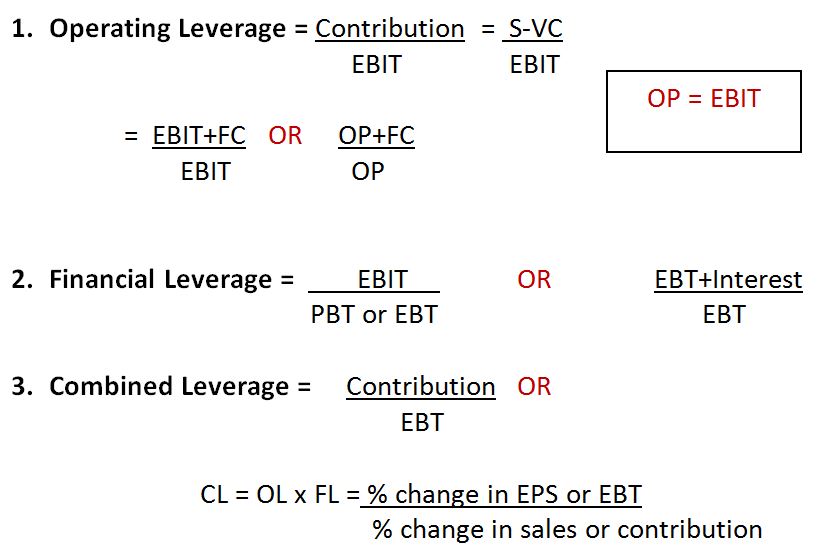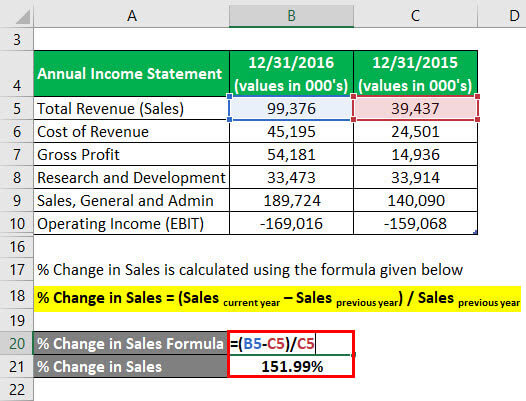
The minute business picks up, fixed assets such as property, plant and equipment (PP&E), as well as existing workers, can do a whole lot more without adding additional expenses. For example, if a company sells $10 and its operating margin is 50%, its operating profit is $5. But if the company’s sales grow to $20 and the operating margin remains the same, then the company’s profits will scale correspondingly to $10. However, if the company has operating leverage and the operating margin falls to 40%, then the company’s operating profit would grow to $12. The degree of operating leverage (DOL) measures how much change in income we can expect as a response to a change in sales. In other words, the numerical value of this ratio shows how susceptible the company’s earnings before interest and taxes are to its sales.
Operating Leverage Formula: How to Calculate Operating Leverage
There are fewer variable costs in a cost structure with a high degree of operating leverage, and variable costs always cut into added productivity—though they also reduce losses from lack of sales. By breaking down the equation, you can see that DOL is expressed by the relationship between quantity, price and variable cost per unit to fixed costs. If operating income is sensitive to changes in income tax vs payroll tax the pricing structure and sales, the firm is expected to generate a high DOL and vice versa. Other company costs are variable costs that are only incurred when sales occur. This includes labor to assemble products and the cost of raw materials used to make products. Some companies earn less profit on each sale but can have a lower sales volume and still generate enough to cover fixed costs.
Core Financial Modeling
When the firm has fixed costs, the percentage change in profits due to changes in sales volume is greater than the percentage change in sales. With positive (i.e. greater than zero) fixed operating costs, a change of 1% in sales produces a change of greater than 1% in operating profit. By contrast, a retailer such as Walmart demonstrates relatively low operating leverage. The company has fairly low levels of fixed costs, while its variable costs are large.

Operating Leverage Formula 2: % Change in Operating Income / % Change in Sales
As said above, we can verify that a positive operating leverage ratio does not always mean that the company is growing. Actually, it can mean that the business is deteriorating or going through a bad economic cycle like the one from the 2nd quarter of 2020. Most investors, such as private equity firms and venture capitalists, prefer companies with high operating leverage because it makes growth faster and easier. These companies with high operating leverage and low margins tend to have much more volatile earnings per share figures and share prices, and they might find it difficult to raise financing on favorable terms. With operating leverage, the higher potential rewards come if the company increases its sales – which will translate into higher Operating Income and Net Income. However, most companies do not explicitly spell out their fixed vs. variable costs, so in practice, this formula may not be realistic.
The company’s fixed costs are costs they have to pay regardless of sales, such as rent, insurance, and taxes. And when sales fall, these fixed costs don’t move, causing bigger drops in profits. A great example is an amusement park like Six Flags, which has high operating leverage. With over 75% fixed costs and labor occupying the highest cost, when the parks were shuttered during Covid, they lost huge, but the parks will see growing profitability as they reopen. During economic growth, high operating leverage can lead to outsized increases in profitability as fixed costs are spread over more sales. But during downturns, it can result in steeper declines in profitability.
However, since the fixed costs are $100mm regardless of the number of units sold, the difference in operating margin among the cases is substantial. The debt-to-capital ratio is one of the more meaningful debt ratios because it focuses on the relationship of debt liabilities as a component of a company’s total capital base. It is calculated by dividing a company’s total debt by its total capital, which is total debt plus total shareholders’ equity. In most cases, leverage ratios assess the ability of a company, institution, or individual to meet their financial obligations.
- Get instant access to video lessons taught by experienced investment bankers.
- This increases risk and typically creates a lack of flexibility that hurts the bottom line.
- Though high leverage is often viewed favorably, it can be more difficult to reach a break-even point and ultimately generate profit because fixed costs remain the same whether sales increase or decrease.
- A leverage ratio may also be used to measure a company’s mix of operating expenses to get an idea of how changes in output will affect operating income.
- Once they achieve maturity and sales level, operating efficiency becomes more important.
The degree of leverage helps us determine how exposed the company is to changes in sales. A great practice is looking at the operating leverage over longer periods, say five to ten years, and comparing Microsoft to others in its industry to get a sense of its position. Operating leverage can inform investors about the company’s volatility they are analyzing. For example, companies with high operating leverage can be great and profitable and vulnerable to big changes in business cycles. In contrast, a company with low operating leverage will experience less volatility when revenues change. Companies with higher degrees of operating leverage, like Microsoft, will experience larger changes in profits during revenue changes.
If fixed costs are high, a company will find it difficult to manage short-term revenue fluctuation, because expenses are incurred regardless of sales levels. This increases risk and typically creates a lack of flexibility that hurts the bottom line. Companies with high risk and high degrees of operating leverage find it harder to obtain cheap financing. Operating leverage measures a company’s fixed costs as a percentage of its total costs. It is used to evaluate a business’ breakeven point—which is where sales are high enough to pay for all costs, and the profit is zero. A company with high operating leverage has a large proportion of fixed costs—which means that a big increase in sales can lead to outsized changes in profits.
When analyzing any company, we need to assess the degree of operating leverage the company carries and what impact the rise or fall of revenues will have on profitability. Strategies include diversifying revenue streams, implementing variable cost structures where possible, closely monitoring sales and costs, and maintaining adequate financial reserves to weather downturns. Operating leverage is a measure of how sensitive a company’s operating income is to changes in its sales revenue. It represents the degree to which a company can increase its operating income by increasing its revenue.
The downside is that profits are limited since costs are so closely related to sales. That’s why if investors like risk, they prefer a higher operating leverage. A DOL of 2.68 means that for every 10% increase in the company’s sales, operating income is expected to grow by 26.8%. This is a big difference from Stocky’s—which grows 10.9% for every 10% increase in sales. As stated above, in good times, high operating leverage can supercharge profit.
John’s Software is a leading software business, which mostly incurs fixed costs for upfront development and marketing. John’s fixed costs are $780,000, which goes towards developers’ salaries and the cost per unit is $0.08. Given that the software industry is involved in the development, marketing and sales, it includes a range of applications, from network systems and operating management tools to customized software for enterprises. This means that they are fixed up to a certain sales volume, varying to higher levels when production and sales volume increase. Operating leverage is the ratio of a business’s fixed costs to its variable costs.
